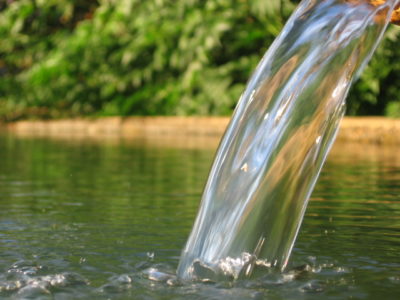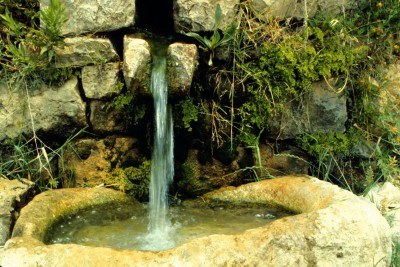 Having a back-up water source — or a water source that does not cost you money — is a great way to ensure that you have water for every situation. In times of disaster, you may lose water from your county or city. Or, if you have a well, a power outage can quickly cause you not to have any water.
Having a back-up water source — or a water source that does not cost you money — is a great way to ensure that you have water for every situation. In times of disaster, you may lose water from your county or city. Or, if you have a well, a power outage can quickly cause you not to have any water.
Many people purchase properties for their homesteads only to never realize that there is a sustainable water source on the property. Often, people just go ahead and have a well installed without first checking the property for springs. Having a spring that feeds into your house can help you have water for free, which will cut down on your power consumption each month and slash the water bills you might have from your city or county. Even if you don’t want to use the water from the spring, you can always have a pipe to your house, available for times of emergency or need.
What is a Spring?
A spring is water from the ground, and it can surface anywhere. Many people will have several different springs on their property. A true spring will come from naturally flowing groundwater. Finding a good spring is as simple as just walking around your property.
Ultra-Efficient Water Filter Fits In Your Pocket!
Tips for Finding the Right Spring
- Dry weather. Search for a spring while the weather is dry. When the ground is saturated, you may have trouble finding the water pooling up. Choose dry days when it has not rained for optimal chances of finding a spring.
- For the best chance of finding a spring, go to the area on your property that’s in the middle elevation. For instance, the side of a hill is often where the spring head will be found.
- Eroded areas. While searching your property, look for signs of erosion. The escape of the groundwater will naturally cause erosion on the property. In this area, you could find an increase in gravel as well as moss and other smooth rocks.
Getting Started with Your Spring
Generally, you can tap into a spring quite easily. All you will need to do is find the head of the spring and install your pipe. You can immediately begin getting the water from the spring. Use gravity to bring the water to your house. If that doesn’t work, you may have to install a pump; any kind of well pump will work. To save cost, you can install a solar panel on the well pump, which will allow you to pump water for free.
It is common when installing a spring to create a reservoir. This allows the water to build up in the reservoir before it’s pump to your house. This also gives smaller springs an adequate chance to fill up the reservoir and keep up with demand in your home.
Once you turn your sink on for the first time, you will notice that the water is somewhat dirty and murky. It is best not to drink the water during this time – at least until the spring has settled down and has started pumping efficiently. This water is completely safe to bath in and of course can be uses in toilets.
It should clear up within a matter of days and should be safe to drink.
Safety
For the most part, naturally fed springs are completely safe. If you are worried about the water being contaminated, test it. Consider testing your water source at least once every six months to ensure that your water is free of any contaminants. It’s a good idea to place a fence around the spring and reservoir area to keep any wild animals or any people out.
Maintenance
Springs may need some maintenance throughout the year. Sandy build-up as well as gravel build-up can be an issue. You want to make sure that you have the proper screen system and the proper filtering system in your home to ensure that this does not become a problem. You should check your spring head once a year to make sure the water is pumping efficiently and to make sure that there is no build-up. Also, make sure that all your pipes are secure to prevent bursting or any kind of breakages.
Spring-fed water is a highly popular choice for many homesteaders, who love the fact it is free from all the added chemicals that are in city water today. While it may take some time and effort to get a spring up and running, you eventually will have clean (and free) water coming into your house every single day.
Do you use spring water? Do you have any advice? Share it in the comments section below:
 Off The Grid News Better Ideas For Off The Grid Living
Off The Grid News Better Ideas For Off The Grid Living





